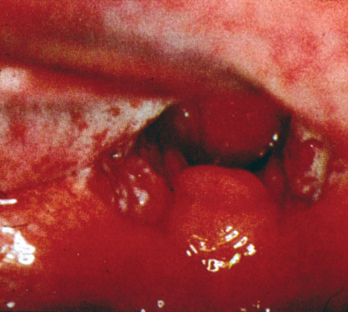CASE 1
A 14-year-old girl presented to the emergency department with a 2-day history of fever, sore throat, and a red left eye, which felt like there was ‘sand’ in it. She had been at a summer camp for the past 2 weeks where several other children had a similar illness. Activities at the camp included swimming in a local pool.
PHYSICAL EXAMINATION
LABORATORY STUDIES
Diagnostic Work-Up
A clinical diagnosis of pharyngoconjunctival fever was considered. Table 1-1 lists the likely causes of illness (differential diagnosis). The investigational approach to delineating the etiology may include
TABLE 1-1 Differential Diagnosis and Rationale for Inclusion (consideration)
Rationale: All of the above may cause pharyngitis. Influenza, a seasonal disease, is unlikely (also, no cough is present). Selected viral (e.g., adenovirus, enterovirus, herpes simplex) and bacterial agents (e.g., N. gonorrhoeae) cause conjunctivitis. Whereas rhinovirus, coronavirus, and Epstein-Barr virus cause upper respiratory symptoms, conjunctivitis is not usually seen. S. pyogenes and N. gonorrhoeae need to be ruled out as possible causes because they would require specific antibiotic therapy.
COURSE
A throat culture was taken, and the next day revealed no evidence of Streptococcus pyogenes or Neisseria gonorrhoeae. A respiratory virus was recovered from the cell cultures of the nasopharyngeal specimen and conjunctival swab and identified by fluorescence antibody staining of virus-infected cells using an antibody reagent.
Stay updated, free articles. Join our Telegram channel

Full access? Get Clinical Tree



